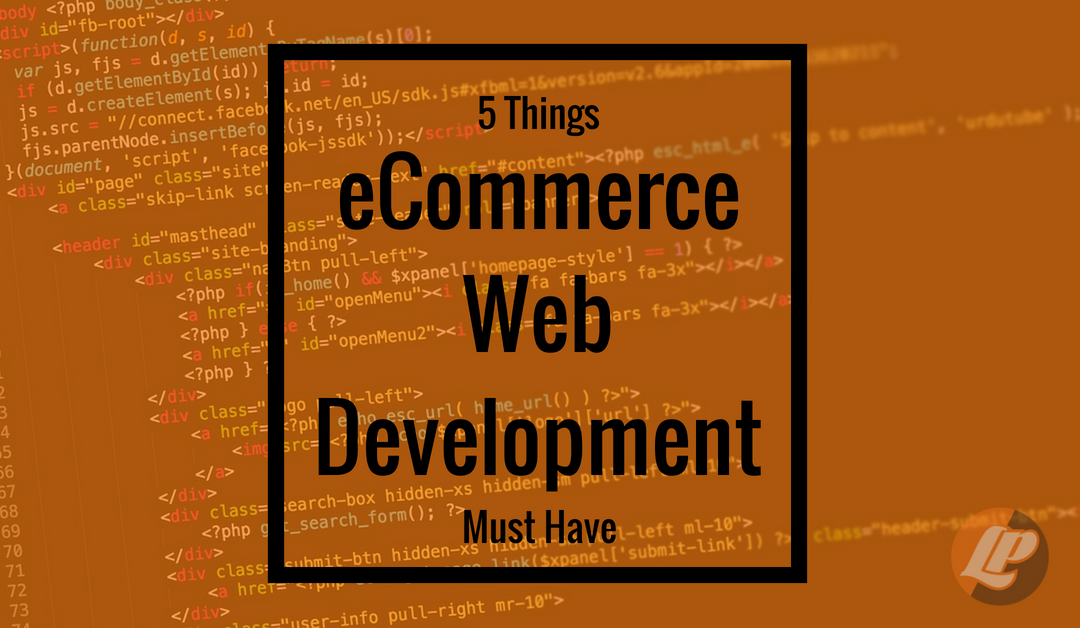Web development is often a complicated task unto itself. An eCommerce site produces additional challenges that need to be navigated. So what does it take to execute a great eCommerce web development?
It must be an easy and intuitive experience for the customer, from the user experience to the actual transaction. Essential items to consider when developing an eCommerce website include the following:
Responsive Design
This year, Google announced the first rollout of mobile-first indexing. When creating an eCommerce platform, it is vital that not only the desktop version of the website has a user-friendly experience, but the mobile version as well. After all, statistics show that 35% of eCommerce sales are on a mobile device.¹
While there’s no one-size-fits-all eCommerce solution, WooCommerce on WordPress is a great starting point for most people. There are tons of responsive themes that play well, and seasoned developers often like to create their own.
For many companies, this is a perfect sweet-spot between a drag-and-drop style builder and a custom CMS. No matter which you choose, make sure both desktop and mobile use are flawless.
Site Search
An estimated 30% of visitors to eCommerce sites use the “search” function to find items.² It is therefore imperative to make this feature available and easy to navigate.
Be sure to allow for faceted search so that customers can narrow their search by categories such as size, price, department, manufacturer, etc. A good tip is also to use auto-complete to make the selection and check out a faster overall experience.
Guest Checkouts
While all companies want to encourage consumers to create an account to have their information for follow up communication, one-time purchasers will find it annoying if there is no guest checkout option. To this end, be sure to keep the guest checkout option even if you are itching to collect the contact information for everyone.
Pro tip: allow users to create an account after they are finished checking out as a guest checkout so that they can use the information that is already saved. This will likely increase your chances of capturing their details.
Optimized Performance
You need to make sure that your site is fast and loads quickly. In fact, 40% of users abandon a website that takes more than 3-seconds to load!³ This is especially the case with mobile users, as they are likely multi-tasking with other activities while trying to access your website.
Some ways to ensure the speed of your site include compressing images, use of caching, and combining CSS resource files and JavaScript into single files. Google Lighthouse is a great tool to find performance optimizations. It was designed for Progressive Web Apps but works for your site too.
Security, Security, Security
Perhaps, the most crucial aspect of the entire user experience is knowing their information is safe. If your site is not secure, you risk both liability and your customer base. You should support SSL to encrypt information to make sure it remains secure.
Trust is especially critical when it comes to credit card and payment information. Be sure that none of this information is kept on your site’s database because it is a huge security risk and you could be liable for a loss should it occur.
You probably know from your own experience which eCommerce sites work and which don’t. Try using Wappalyzer to discover what technologies the sites you like are using.
Also, be aware that a successful site involves more than just the technical end running smoothly. Plan SEO and marketing strategies to attract new customers and convert the “tire-kickers.” Keep your product data organized, and minimize the clicks involved everywhere. If you need help planning and executing your eCommerce project, drop us a line.
References:
¹ https://blog.wsol.com/5-things-to-consider-when-developing-an-ecommerce-website
² https://econsultancy.com/blog/10407-site-search-for-e-commerce-13-best-practice-tips#i.e6bb0iahterern
³ https://neilpatel.com/blog/loading-time/
